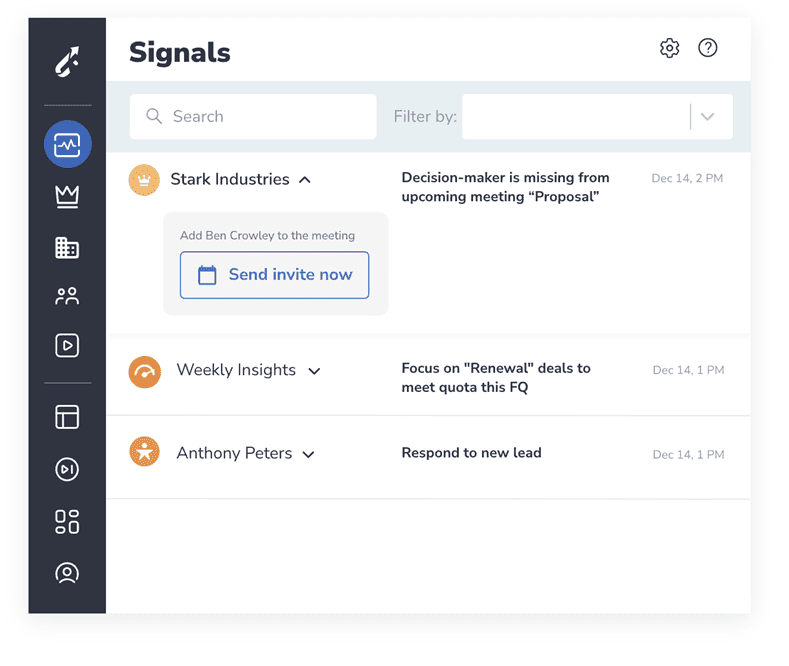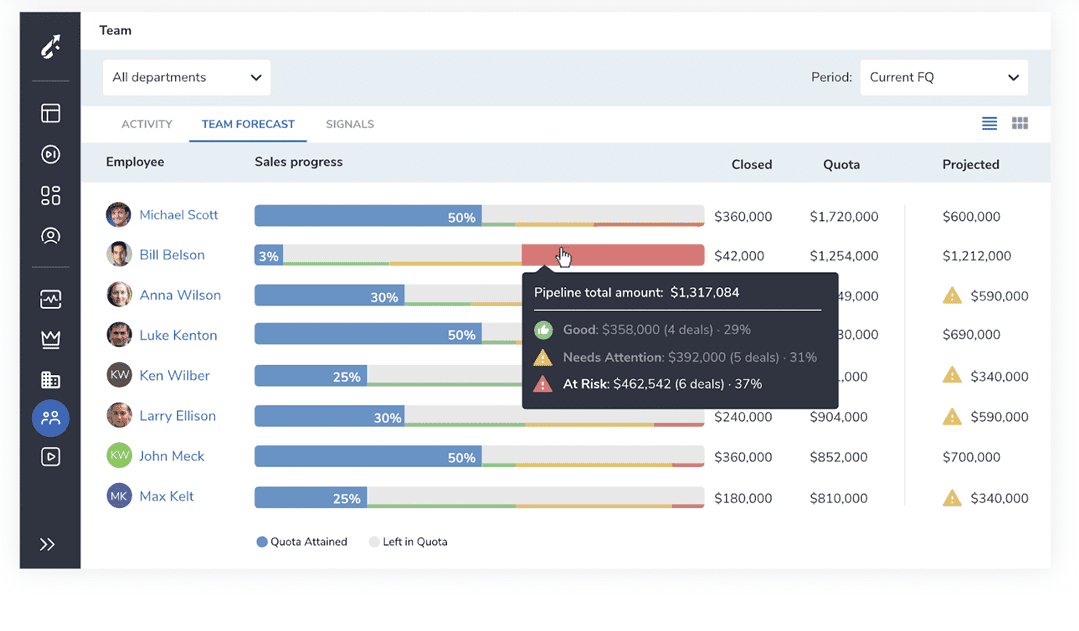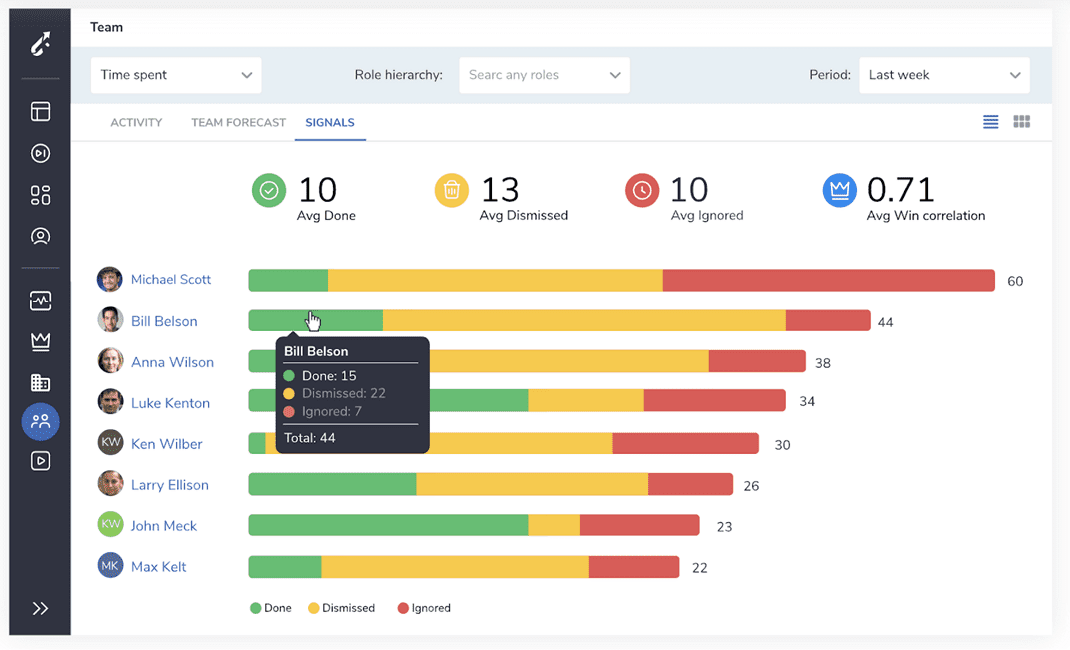Account planning marries big data analytics and strategic planning with human relationships to tackle the challenges of today’s complex, fast-paced sales landscape.
The strategy rejects the idea of looking at sales opportunities in black-and-white terms — where deals are either open or closed and “wins” represent the end of the journey. Instead, account planning is about making the most of existing relationships — driving revenue by continuously delivering value to existing accounts.
Here, I’ll explain what account planning is, the benefits it brings to the table, and then, share some best practices for implementing this strategy in your own organization.
What is Account Planning?
Account planning is the process of mapping out important details about a new prospect or existing customer, including information about their decision-making process, the companies you’re competing with to close them, and the overall strategy to win them over, retain and grow them.
Sellers aim to uncover buyer needs, problems, and pain points on an ongoing basis and use that information to keep earning their business — by providing valuable insights and solutions.
It’s important to understand that account planning is a continuous process of researching, strategizing, and presenting solutions that speak to where the account — and the market — stand today. Done right, account planning boosts retention rates and customer lifetime value, and it helps orgs maintain predictable cash flow.
Account Planning vs. Account Management
Now, before we move on, it’s important to note that account planning and account management are often used interchangeably, but actually describe two different things.
Account management is a methodical process of identifying and prioritizing the accounts that require more attention, and from there, allocating time and resources based on what’s available.
Account management focuses on selecting high-value or high-profit accounts to nurture to maximize growth or revenue. But – not every account requires a dedicated plan.
Account management often supports account planning, in that, it’s used to ID the accounts that could benefit from an account plan – that way, sales teams can focus their efforts on high-impact accounts.
Account Planning Benefits
If you’ve spent any time at all in the sales game, chances are, you already understand the value of nurturing customer relationships — and how those relationships impact the bottom line.
If you need more convincing as to why account planning, as a dedicated strategy matters, here’s a quick look at the benefits it brings to the table:
- Close deals faster. Account planning is all about generating more revenue from existing accounts. This means sellers can bypass the earlier stages in the sales process and instead, focus on closing high-value sales with customers that already trust your company and believe in your products or services. That ability to skip ahead several steps inevitably means increased sales efficiency and more predictable wins.
- Reduce acquisition costs. Tracking down prospects and converting them into customers eats up a ton of time and money. Strategic account planning allows sellers to spend their time focusing on existing accounts, rather than starting from scratch each time. Additionally, orgs will spend less on marketing and advertising campaigns aimed at bringing in new leads. Instead, those resources can be allocated toward other projects, such as developing content that provides deeper, more personalized insights to customers rather than the same old basic blog posts.
- Increase CLV. You’ve probably heard this statistic a million times by now: on average, it costs 5x as much to acquire a new customer than it does to retain an old one. What’s more, increasing retention by just 5% can generate a 25-90% increase in profit. Sure, that’s a big range, but even 25% is pretty impressive. Account planning focuses on nurturing your most valuable accounts and ideally, helps you increase contract size, win renewals, sell upgrades, and take advantage of cross-selling opportunities. The point is, this strategy focuses on increasing customer lifetime value by putting as much care into the post-sale process as closing the initial deal.
- Retain key relationships. Account planning, by nature, demands frequent communication between buyer and seller – which means sellers are perfectly positioned to be tuned in to the real-time needs of each account. Because there’s this constant back-and-forth, it’s much easier for reps to be proactive when it comes to providing valuable insights and solutions. As a result, customers are more likely to be satisfied with your products and services, and in turn, more likely to be loyal to your company for the long-haul.
Account Planning Strategy Best Practices
So, account planning is part of a broader account-based selling strategy, a sales approach that centers on developing an individualized plan for each account. That means every account plan will look different – even within a single organization – with individual needs, challenges, opportunities, competitors, etc. informing the strategy.
Still, there are some general best practices to keep in mind while writing any account plan. Here’s a look at some of the big ones.
Make sure you have all of the data you need
Given that sales has evolved into a data-driven practice, account planners need access to the complete picture.
To get started, you’ll need access to the following data:
- Communication history
- Website analytics
- Competitive and market intelligence
- Sales analytics
- Buying and browsing behaviors
- Etc.
Revenue Grid allows users to capture data from all connected sources and break down silos that create barriers to actionable sales insights. That data can then be used to create predictive forecasts, automated sequences, and enable AI-driven guided selling capabilities.
Identify which accounts need an account plan
This points back to the concept of strategic account management. Early on, you’ll want to make a list of all existing accounts. Try to include as many details as possible. For example:
- Company info
- Purchase history
- Prior interactions
- Key decision-makers/points of contact
- Account structure
From there, aim to calculate the potential revenue for each account and the likelihood of generating new sales, renewals, upgrades, whatever.
Revenue Grid’s Pipeline Signals can help sales teams score opportunities — allowing reps to focus on the right opportunities. More than that, it also helps sellers understand why certain accounts have certain scores — and what factors influence wins and losses. This, in turn, allows teams to get better at identifying risks and turning things around before it’s too late.
Uncover the needs of each account
Once you’ve determined which accounts need a plan, you’ll want to dig into your customer intelligence data to uncover needs, pain points, and opportunities to provide value.
Use the research you’ve gathered about market conditions, your competitors, and customer interactions and buying behaviors, and try to answer the following questions:
- What challenges is the customer facing right now?
- What new needs have emerged?
- What concerns do they have?
- What problems are they trying to solve?
- What are the client’s primary goals?
- How do they measure success?
- What is their current plan for achieving critical objectives?
- Who is involved in the decision-making process?
- Is there an opportunity to fill an unmet need?
Understanding the unique challenges and needs associated with each account is a critical step toward building strong, lasting bonds with your customers. Here, the goal is to find ways that your products/services can help each customer be successful.
Put together a step-by-step plan for meeting client needs
Once you’ve defined client needs, you’ll need to come up with a step-by-step plan for meeting those needs. It helps to break your account plan into a series of stages — much like any other sales process — and assign a specific, measurable goal to each of those stages.
Now, again, it’s important to note that steps will vary by account. But – they might include things like:
- Analyzing the account
- Mapping the account structure
- Developing a plan for achieving short-term goals (i.e. convincing clients to renew a contract or upgrade their plan)
- Defining steps for achieving long-term objectives (i.e. hitting growth or revenue targets)
You can then reinforce account plans with Revenue Grid’s guided selling tools. For example, Revenue Signals helps reps prioritize actions, stay focused on the right accounts, and ensure they follow sales plays to a T.

Run regular account planning audits
Finally, it’s important that you run regular audits of your account planning strategy to ensure that you’re tracking against short and long-term objectives (both your own goals and your clients’).
Revenue Grid allows users to keep tabs on the pipeline and make sure that your account plans deliver the desired outcomes. For example, you can look at Team Forecasts for a high-level overview of seller performance.

Then from there, you might drill down and look at how each rep responds to Signals and use that information to refine the overall strategy.

Conclusion
While proper execution takes time and significant effort investing in this data-driven strategy stands to pay off many times over.
Done right, account planning benefits both buyer and seller. Sales teams can maximize their selling time and generate more revenue by staying focused on outcomes, while customers gain a trusted partner, invested in their success.